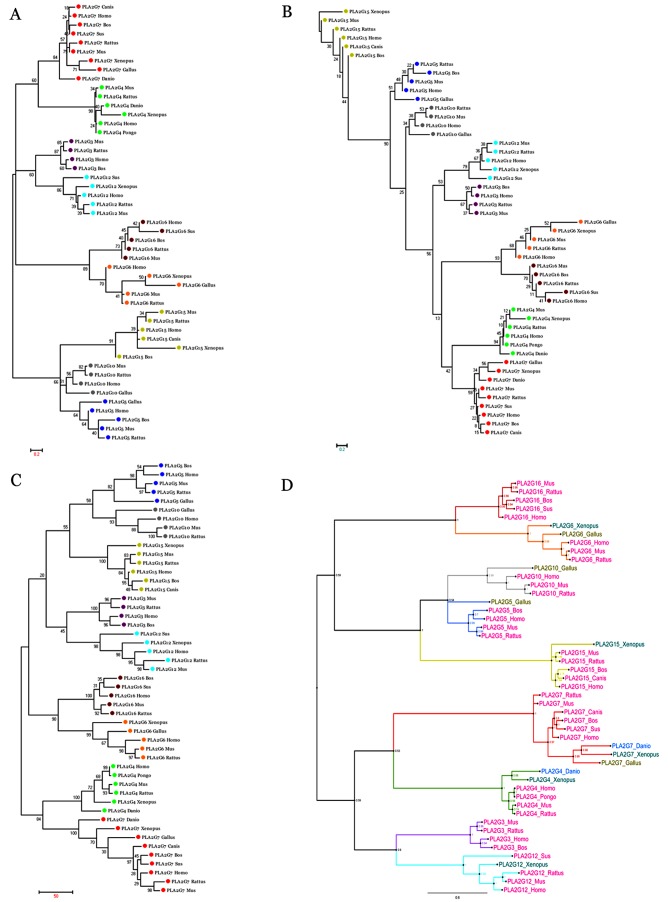Figure 2.
Phylogenetic trees of the PLA2 gene in vertebrates. (A) Phylogenetic tree produced using the NJ method; (B) phylogenetic tree produced using the ME method; (C) phylogenetic tree produced using the MP method. Genes with a crimson disc belong to the PLA2G16 group; genes with an orange disc belong to the PLA2G6 group; genes with a grey disc belong to the PLA2G10 group; genes with a dark blue disc belong to the PLA2G10 group; genes with a yellow disc belong to the PLA2G15 group; genes with a red disc belong to the PLA2G7 group; genes with a green disc belong to the PLA2G4 group; genes with a purple disc belong to the PLA2G3 group; genes with a light blue disc belong to the PLA2G12 group. (D) Phylogenetic tree of the PLA2 gene in vertebrates produced using the Bayesian method. Genes with a crimson branch belong to the PLA2G16 group; genes with an orange branch belong to the PLA2G6 group; genes with a grey branch belong to the PLA2G10 group; genes with a dark blue branch belong to the PLA2G10 group; genes with a yellow branch belong to the PLA2G15 group; genes with a red branch belong to the PLA2G7 group; genes with a green branch belong to the PLA2G4 group; genes with a purple branch belong to the PLA2G3 group; genes with a light blue branch belong to the PLA2G12 group; genes in pink belong to mammals; genes in dark yellow belong to birds; genes in dark green belong to amphibians; genes in sky blue belong to fish. NJ, neighbor-joining; ME, minimum evolution; MP, maximum parsimony.

